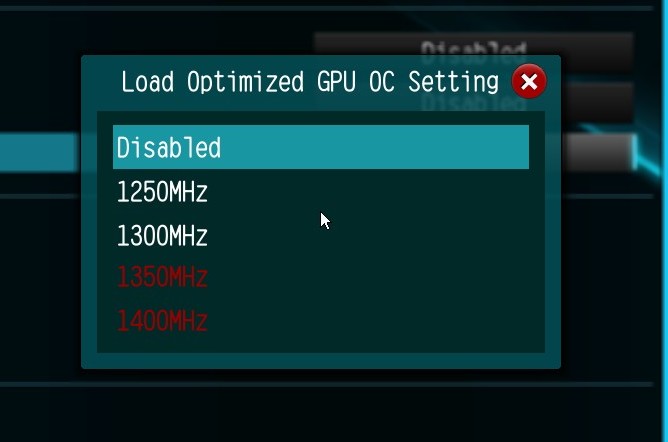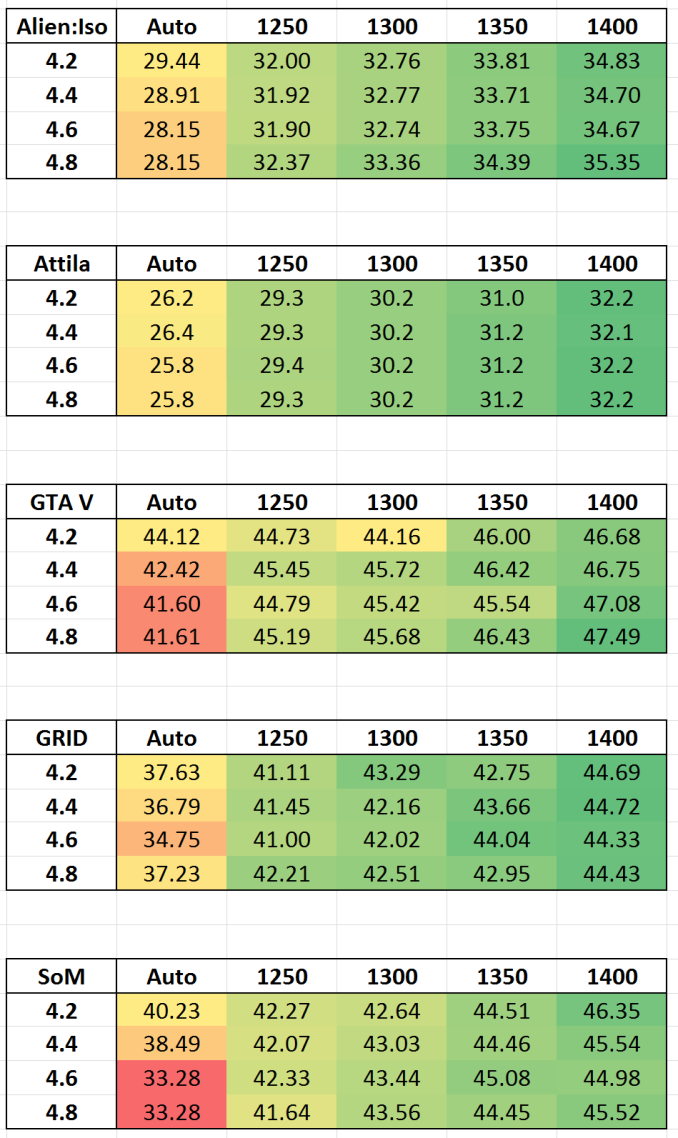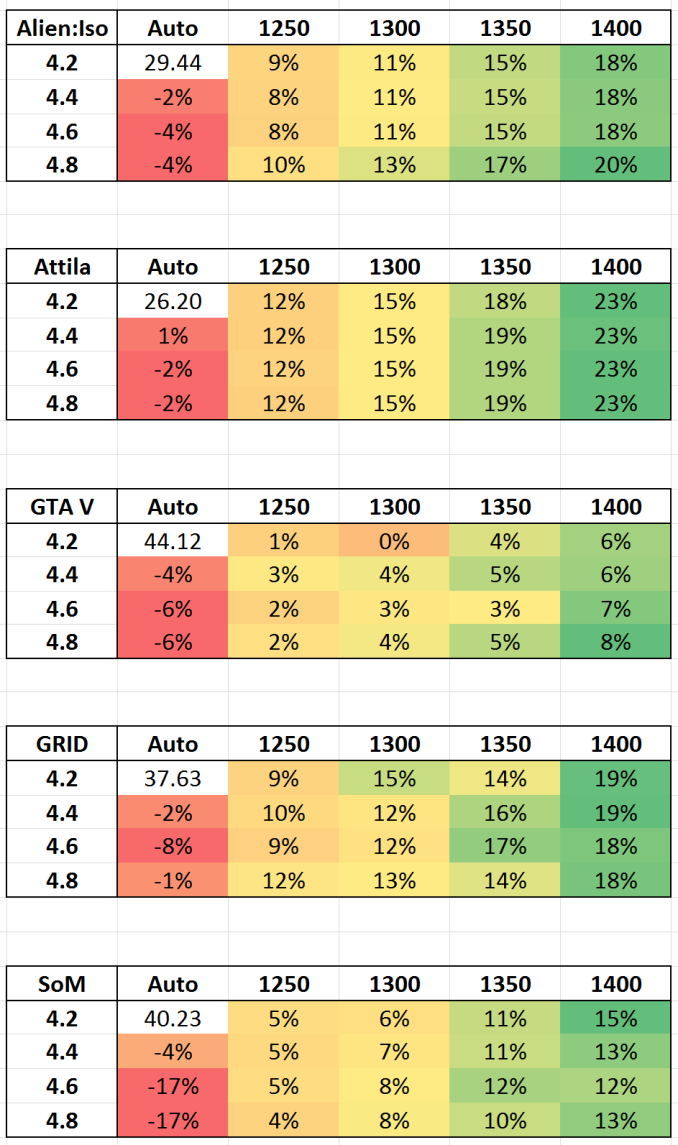The Intel Skylake i7-6700K Overclocking Performance Mini-Test to 4.8 GHz
by Ian Cutress on August 28, 2015 2:30 PM ESTGaming Benchmarks: Integrated Graphics Overclocked
Given the disappointing results on the Intel HD 530 graphics when the processor was overclocked, the tables were turned and we designed a matrix of both CPU and IGP overclocks to test in our graphics suite. So for this we still take the i7-6700K at 4.2 GHz to 4.8 GHz, but then also adjust the integrated graphics from 'Auto' to 1250, 1300, 1350 and 1400 MHz as per the automatic overclock options found on the ASRock Z170 Extreme7+.
Technically Auto should default to 1150 MHz in line with what Intel has published as the maximum speed, however the results on the previous page show that this is more of a see-saw operation when it come to power distribution of the processor. With any luck, actually setting the integrated graphics frequency should maintain that frequency throughout the benchmarks. With the CPU overclocks as well, we can see how it scales with added CPU frequency.
Results for these benchmarks will be provided in matrix form, both as absolute numbers and as a percentage compared to the 4.2 GHz CPU + Auto IGP reference value. Test settings are the same as the previous set of data for IGP.
Absolute numbers
Percentage Deviation from 4.2 GHz / Auto
Conclusions on Overclocking the IGP
It becomes pretty clear that by fixing the frequency of the integrated graphics, there is for the most part no longer the detrimental effect when you overclock the processor, or at least the reduction in performance to the same degree (which falls within standard error). On three of the games, fixing the integrated graphics to 1250 Mhz nets ~10% boost in performance, which for titles like Attila extends to 23% at 1400 MHz. By contrast, GTA V shows only a small gain, indicating that we are perhaps limited in other ways.














103 Comments
View All Comments
Oxford Guy - Saturday, August 29, 2015 - link
The problem is that overclocks should NEVER be called stable if they aren't.And, I don't like the way Anandtech pumps ridiculous amounts of voltage into chips (like they did with the 8320E).
Gigaplex - Sunday, September 27, 2015 - link
Production software in my books is any released software that completes a useful task, rather than just run synthetic tests.hyno111 - Saturday, August 29, 2015 - link
Is there a temperature chart for overclocking?sonny73n - Sunday, August 30, 2015 - link
Ian seems to miss the most important part in OCing.MrSpadge - Thursday, September 3, 2015 - link
The temperature depends strongly on your cooling, TIM application etc. If Ian included those numbers, people would be shouting "but I get different values with..."kneelbeforezod - Saturday, August 29, 2015 - link
12% better performance for a 32% power increase. uha.StrangerGuy - Saturday, August 29, 2015 - link
I OCed a cheapo AXP1700 by 25% on a budget nForce 2 board and stock cooling simply with FSB 266->333. I OCed my $183 E6300 that surpassed a $1000 X6800 in performance.Now, Intel and Asus et al thinks they are doing us a favor top-end mainstream CPUs that are barely overclockable on even on the most pricey of mobos, and hardly anyone calling out their bullshit, just because of unlocked multipiers? Gimme a break.
Am I the only sane guy here or what?
jihe - Monday, August 31, 2015 - link
That's why I'm still on nehalem, overclocking an x5650 is much more fun than this pay a premium to overclock crap that intel has been feeding us.SanX - Saturday, August 29, 2015 - link
Ian, add at least 4790k at 4.5-4.8GHz for us to see how bad new processors actually areV900 - Saturday, August 29, 2015 - link
Isn't this right about the usual time an AMD troll jumps in to tell us how you can overclock Kaveri to 5 Ghz, and you don't even need an aircooler or anything!